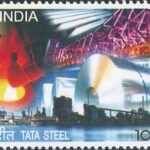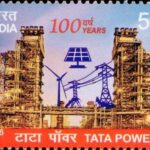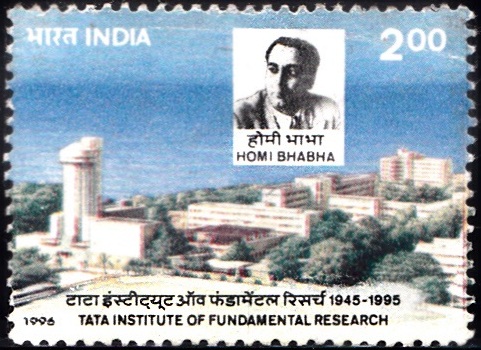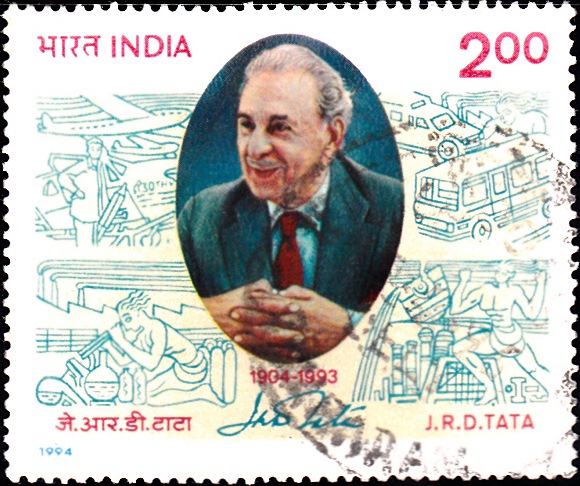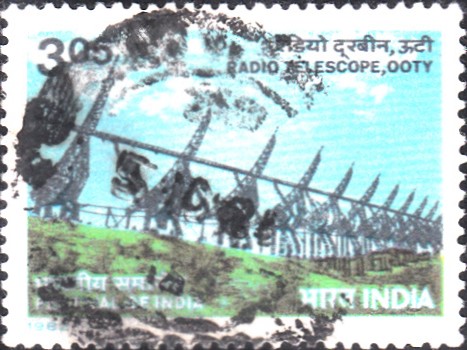
Radio Telescope, Ooty
A commemorative postage stamp on Science and Technology : Ooty Radio Telescope, part of National Centre for Radio Astrophysics (NCRA) of Tata Institute of Fundamental Research (TIFR) near Ootacamund :
 Issued by India
Issued by India
Issued on Mar 23, 1982
Issued for : Indian Posts & Telegraphs Department is happy to issue a stamp to commemorate achievements in Science and Technology.
Description of Designs : The stamp depicts the Radio Telescope at Ooty. First day cover has been designed by FN XIII Advertising Company and cancellation by Charanjit Lal.
Type : Stamp, Postal Used
Colour : Yellow, Red, Blue and Black
Denomination : 305 Paise
Overall size : 3.91 x 2.90 cms.
Printing size : 3.55 x 2.54 cms.
Perforation : 13 x 13
Paper : Unwatermarked adhesive stamp paper
Number printed : 20,00,000
Number per issue sheet : 35
Printing process : Photogravure
Printed at : India Security Press
About :
- This large Radio Telescope, which is in the form of a parabolic cylinder 530 M long x 30 M wide, operating at 327 MHz, is one of the largest telescopes in the world operating at Meter wavelengths. It is four times more sensitive than the 76 meter diameter Jodrell Bank parabolic dish. The reflecting surface of the telescope consists of 1100 thin stainless steel wires which are supported on 24 steel frames mounted on 24 equidistant steel towers.
- The beam of the Telescope can be steered in the East-West direction by mechanical steering; whereas that in the North-South direction is done electronically. Radio signals are received by 1056 half wave dipoles at the focal line. Making use of an appropriate hill slope, the axis of the instrument has been kept parallel to the earth’s axis of rotation.
- The concept, design, fabrication and the resources for this telescope are fully indigenous. The telescope is operated by the Tata Institute of Fundamental Research under the auspices of the Department of Atomic Energy of the Government of India.
- Scientific Programmes and Significant Results :
- Lunar Occultation of Radio sources :
- The telescope is occupied for about 10 hours a day for survey and studies of radio sources in the sky by the Lunar occultation technique. Since February 1970, about 1200 radio sources have been observed. The information, particularly of the angular size of weaker sources, has provided an independent evidence in support of the Big Bang model. The observations have also helped in understanding the physics of radio sources.
- Interplanetary Scintillations Observations :
- The telescope is used for the study of compact radio sources by observing the fluctuation of the intensity of radio signals from radio sources caused by the inter-planetary medium. This information is valuable for cosmological investigations and also gives one of the best early warnings for geomagnetic disturbances.
- Pulsars :
- In a systematic search for pulsars, five pulsars have been discovered at Ooty. One of these is a pulsar with a large duty cycle of 21% as against a normal duty cycle of 3 to 5%. Certain characteristics of twelve weak pulsars also have been determined.
- The telescope is also used for other programmes such as flare stars, radio re-combination line and deuterium studies etc.
- Future Developments :
- To enable studies of radio sources beyond the path of the moon in the sky at high resolution and with high sensitivity, a synthesis radio telescope consisting of seven smaller antennae and the Ooty radio telescope over a baseline of 4 km is being constructed. The aim is to achieve a resolution of 40 secs of arc at 327 MHz, and a sensitivity of 5 millijansky for 10 hours integration time. There are plans to extend the baseline to 9 km which will improve the performance further by a actor of about 2 to 3.
- Technological fall-outs from the Ooty Radio Telescope Project :
- The indigenous design, fabrication and erection of the Ooty radio telescope has resulted in infusing confidence for self reliance in the whole area relating to the design and fabrication of large microwave antennae in India.
- A novel form of low cost but high efficiency solar energy concentrator, based on a concept of the Ooty Radio Telescope, has been designed and its feasibility study is in progress.
- Lunar Occultation of Radio sources :
- (Text by courtesy : Department of Science and Technology).


